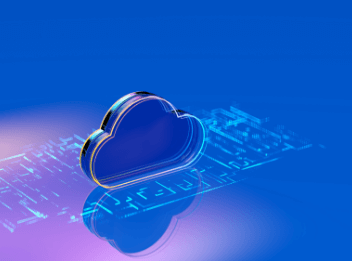In an increasingly interconnected world, where technology is seamlessly integrated into every facet of our lives, the importance of cybersecurity cannot be overstated. The rapid pace of digital transformation has brought with it a corresponding surge in cyber threats, making it imperative for individuals, businesses, and organizations to establish a robust cybersecurity framework. A well-designed framework serves as a comprehensive blueprint for safeguarding sensitive information, ensuring the integrity of digital assets, and fortifying against the ever-evolving landscape of cyber risks.
Understanding the Cybersecurity Framework:
A cybersecurity framework is a structured approach that outlines strategies, policies, procedures, and technical controls to protect digital systems, networks, and data from unauthorized access, attacks, and breaches. It provides a systematic way to assess, manage, and mitigate risks while fostering a culture of cybersecurity awareness.
- Risk Assessment:
The foundation of any effective cybersecurity framework lies in conducting a thorough risk assessment. This involves identifying and evaluating potential threats, vulnerabilities, and their potential impact on the organization. By understanding the specific risks that the organization faces, cybersecurity strategies can be tailored to address those vulnerabilities effectively. - Policies and Procedures:
Establishing clear and comprehensive cybersecurity policies and procedures is crucial. These documents outline guidelines for data protection, access controls, incident response, and more. Policies must be aligned with industry best practices and regulatory requirements. Regular reviews and updates ensure that the framework remains relevant in the face of evolving threats. - Access Controls:
Limiting access to sensitive data and systems is a fundamental tenet of cybersecurity. Implementing role-based access controls (RBAC) ensures that only authorized personnel can access specific resources. This reduces the attack surface and prevents unauthorized users from compromising critical information. - Network Security:
Securing the network infrastructure is pivotal. Firewalls, intrusion detection systems (IDS), and intrusion prevention systems (IPS) play a vital role in monitoring and filtering incoming and outgoing traffic. Regular network scans and vulnerability assessments help identify and rectify potential weaknesses promptly. - Data Encryption:
Encrypting data both at rest and in transit is a vital component of a cybersecurity framework. Encryption converts sensitive information into unreadable code, ensuring that even if unauthorized access occurs, the data remains indecipherable. - Incident Response Plan:
No organization is immune to cyber incidents. Having a well-defined incident response plan (IRP) is essential to minimize damage and swiftly recover from breaches. The IRP should outline the steps to take in the event of a breach, including communication protocols, containment strategies, and post-incident analysis. - Employee Training and Awareness:
Human error is a significant contributor to cybersecurity breaches. Regular training programs and awareness campaigns empower employees to recognize and respond to potential threats. Cultivating a cybersecurity-conscious culture is instrumental in creating a strong line of defense. - Continuous Monitoring and Improvement:
A cybersecurity framework is not a one-time endeavor. It requires continuous monitoring, assessment, and improvement. Regular security audits, penetration testing, and updates to policies and procedures keep the framework aligned with emerging threats and technological advancements. - Compliance and Regulation:
Depending on the industry and geographical location, organizations might be subject to various cybersecurity regulations. A robust framework ensures compliance with these regulations, avoiding legal and financial repercussions. - Collaboration and Communication:
Cybersecurity is a collective effort. Collaborating with peers, industry groups, and government agencies facilitates the exchange of threat intelligence and best practices. Timely communication about emerging threats enhances the overall security posture.
Conclusion
In an era defined by rapid digitalization, building a robust cybersecurity framework is not an option, but a necessity. Organizations that take proactive steps to protect their digital assets not only safeguard sensitive information but also bolster their reputation and maintain the trust of stakeholders. By understanding the evolving threat landscape, implementing best practices, and fostering a culture of cybersecurity, individuals and organizations can navigate the digital realm with confidence, knowing that they are well-prepared to counter and mitigate cyber risks.


